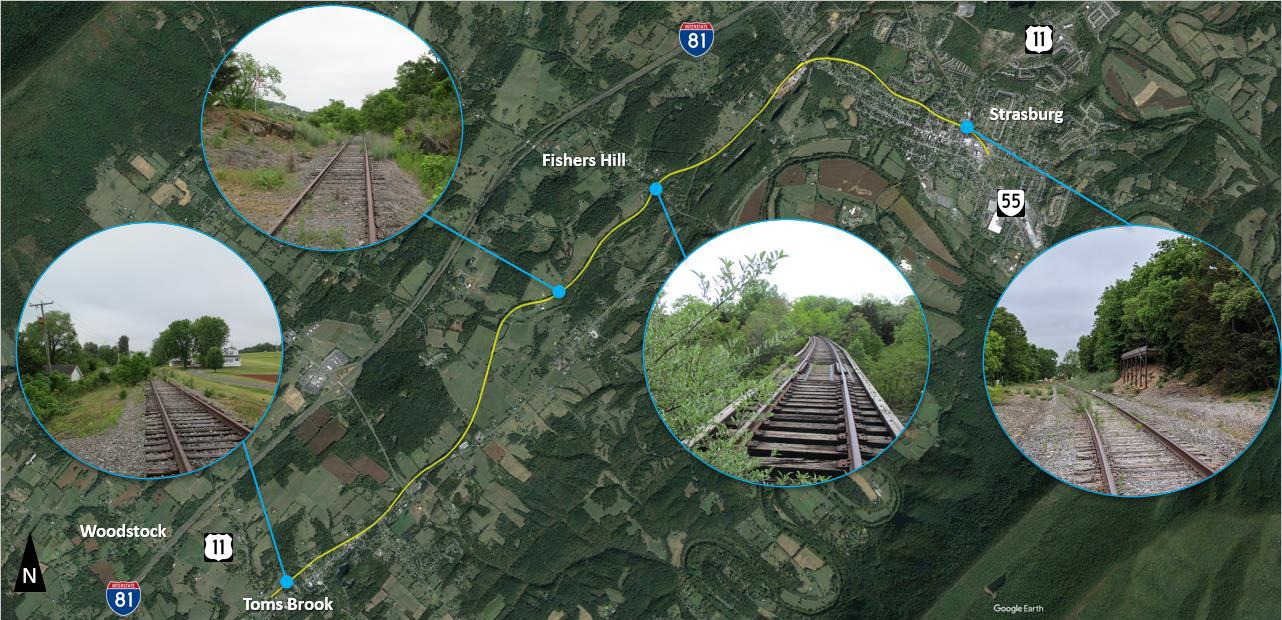The Shenandoah Rail Trail Exploratory Partnership has been tracking along with the Virginia Department of Conservation (DCR) and the Department of Transportation (VDOT) feasibility study to explore the interest, need, and support for the idea of turning the unused single-track rail corridor from Broadway to Front Royal into a multi-use trail.
Their study has included extensive outreach to the public via stakeholder meetings, preliminary engineering cost estimates, and an online survey to get community input. The agencies hosted a webinar in July to report out what they’ve found so far (you can view the recording here).
The online survey had over 9,000 responses, more than VDOT has received for any other project. Survey participants were from communities along the proposed study corridor (61% from Rockingham, Shenandoah, and Warren Counties) as well as potential visitors to the Shenandoah Valley from across the state (30% from elsewhere in Virginia) and the nation (9% from outside the state).

It was exciting to hear that most of the feedback from the stakeholder meetings and the online survey was very supportive of the project. In the survey, 94% of respondents said they’d use the trail, and folks were excited about the pedestrian safety, health and wellness benefits, and the increased quality of life it would bring. There were also lots of ideas about how this trail will look and feel in our Valley landscape—spur trails for access to local communities and amenities, interpretative signs telling our region’s history, and art instillations by local artists.

As the contractor tasked with providing preliminary cost estimates walks through proposed segments of the trail in the webinar, you really get a feel for what this trail could be—the views from the route, how trail users might navigate road crossings, which parts of the trail are the shady ones, and where you can catch glimpses of the North Fork. ‘Preliminary cost estimates’ sounds pretty dry, but to get the data they needed, these folks had to walk the trail and hearing them describe their experience was a good preview to what using the trail might be like for you and me.
There is a lot of information presented in the webinar, but if after watching it you feel like something was left out, or if you have any other ideas for the trail, it’s not too late to share. Please go to the DCR project page to learn how to reach out to Jennifer Wampler with any thoughts before August 21 to have them included in the report due to the Legislature in November.

